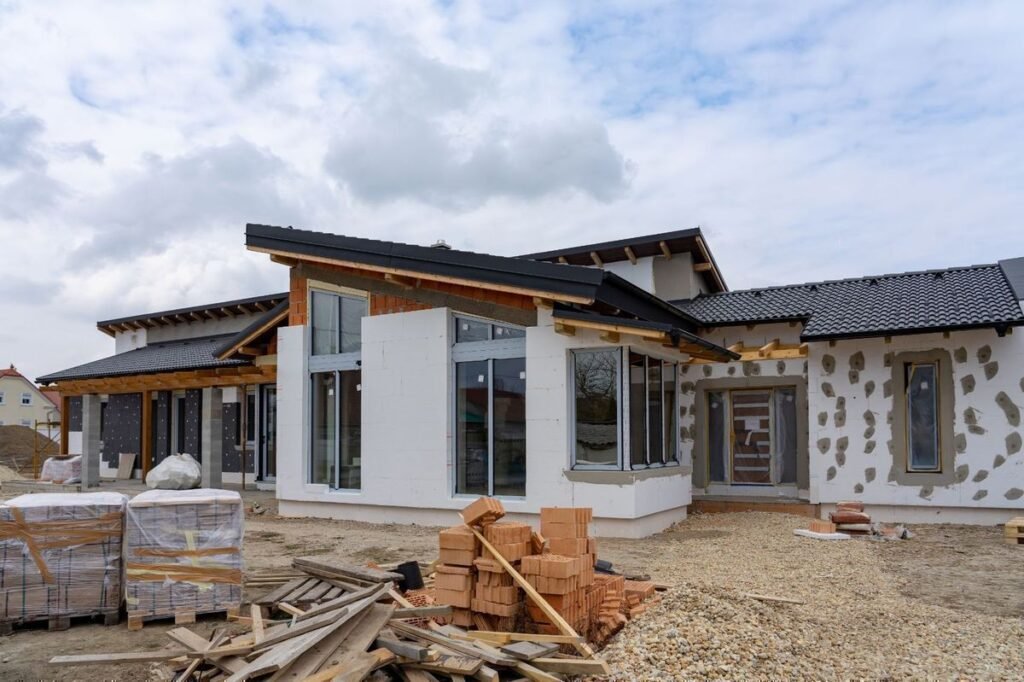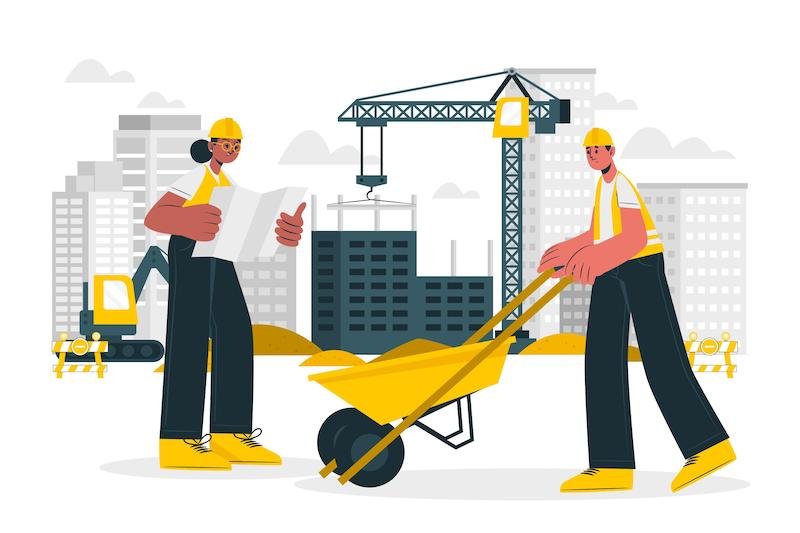E-state Nirman Nigam /estatenirmannigam.in

In a discussion of local construction, there are many aspects to consider, ranging from types of construction projects to the key elements involved in planning, execution, and sustainability. This comprehensive guide will cover various types of local construction, the processes involved, stakeholders, challenges, and modern trends in local construction projects.E-state Nirman Nigam /estatenirmannigam.in
Types of Local Construction
Local construction encompasses various types of projects, including:

Residential Construction: This involves the building of single-family homes, condominiums, and apartment complexes. It may include renovations and remodels.E-state Nirman Nigam /estatenirmannigam.in
Commercial Construction: Projects such as office buildings, retail spaces, hotels, and mixed-use developments fall under this category.
Industrial Construction: These projects E-state Nirman Nigam /estatenirmannigam.ininvolve building facilities such as factories, warehouses, and power plants.
Infrastructure Projects: These include the construction of roads, bridges, tunnels, public transport systems, and utilities.
Institutional Construction: This type of construction focuses on building schools, hospitals, government buildings, and other public service structures.

Key Elements of Local Construction ProjectsE-state Nirman Nigam /estatenirmannigam.in
Local construction projects require careful planning, execution, and management. The following key elements are involved:
Project Planning and Design: This includes defining project scope, creating designs, and obtaining necessary permits and approvals.E-state Nirman Nigam /estatenirmannigam.in
Budgeting and Financing: Estimating costs and securing funding is crucial for the success of a local construction project.
Stakeholder Management: Engaging with community members, government agencies, and other stakeholders is essential for a successful project.

Sustainable Practices: Incorporating eco-friendly materials and methods helps promote sustainability in construction.
Safety and Compliance: Adhering toE-state Nirman Nigam /estatenirmannigam.in safety regulations and local building codes ensures worker safety and structural integrity.
Project Execution and Monitoring: Effective execution, including scheduling, resource allocation, and quality control, is key to completing projects on time and within budget.
Community Engagement: Involving the local community throughout the process can lead to greater acceptance and support for the project.
Stakeholders in Local Construction ProjectsE-state Nirman Nigam /estatenirmannigam.in
A successful local construction project involves a range of stakeholders, each playing a vital role:
Developers: Initiate projects and coordinate with varE-state Nirman Nigam /estatenirmannigam.in ious parties to bring projects to fruition.
Architects and Designers: Responsible for creating designs that meet local codes and client needs.
Contractors and Builders: Carry out the actual construction work, managing labor, materials, and subcontractors.
Government Agencies: Provide permits,E-state Nirman Nigam /estatenirmannigam.in oversight, and ensure compliance with regulations.

Community Members: Local residents and businesses can be impacted by projects and should be engaged throughout the process.
Suppliers and Vendors: Provide materials and services necessary for construction.
Financial Institutions: Provide funding or financing options for projects.
Challenges in Local ConstructionE-state Nirman Nigam /estatenirmannigam.in
Local construction projects may face a variety of challenges:
Regulatory Hurdles: Navigating local regulations and obtaining

necessary permits can be complex.
Budget and Cost Overruns: Material prices and labor costs can fluctuate, leading to budget challenges.
Community Opposition: Projects may face resistance from local residents or businesses.
Environmental Concerns: Projects may encounter opposition or hurdles due to potential environmental impacts.
Supply Chain Disruptions: Delays or shortages in the supply of materials can impact project timelines.
Labor Shortages: Finding skilled labor can be challenging, especially in regions with high demand for construction services.E-state Nirman Nigam /estatenirmannigam.in
Modern Trends in Local Construction
Several modern trends are shaping the future of local construction:
Sustainable Building Practices: Emphasizing energy efficiency, renewable materials, and green design.
Modular and Prefabricated Construction:E-state Nirman Nigam /estatenirmannigam.in Utilizing prefabricated components for faster, more efficient builds.
Smart Buildings: Integrating technology for energy management, security, and occupant comfort.
BIM (Building Information Modeling): A digital tool that enhances collaboration and project visualization.
Community-Centric Design: Projects that focus

on meeting local needs and enhancing community well-being.
Resilient Construction: Designing and buildingE-state Nirman Nigam /estatenirmannigam.in structures that can withstand natural disasters and other challenges.
Adaptive Reuse:
Developers: Initiate projects and coordinate with varE-state Nirman Nigam /estatenirmannigam.in ious parties to bring projects to fruition.
Transforming existing buildings for new purposes to preserve resources and heritage.
In conclusion
Developers: Initiate projects and coordinate with varE-state Nirman Nigam /estatenirmannigam.in ious parties to bring projects to fruition.
local construction is a multifaceted industry that involves careful planning, collaboration, and innovation. By addressing challenges and embracing modern trends, local construction projects can lead to positive impacts on communities and the environment
Developers: Initiate projects and coordinate with varE-state Nirman Nigam /estatenirmannigam.in ious parties to bring projects to fruition.